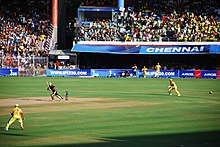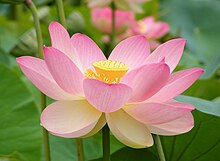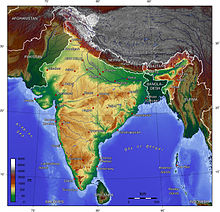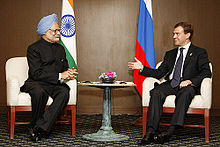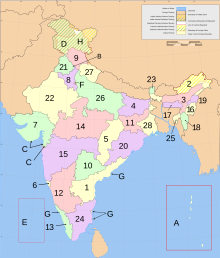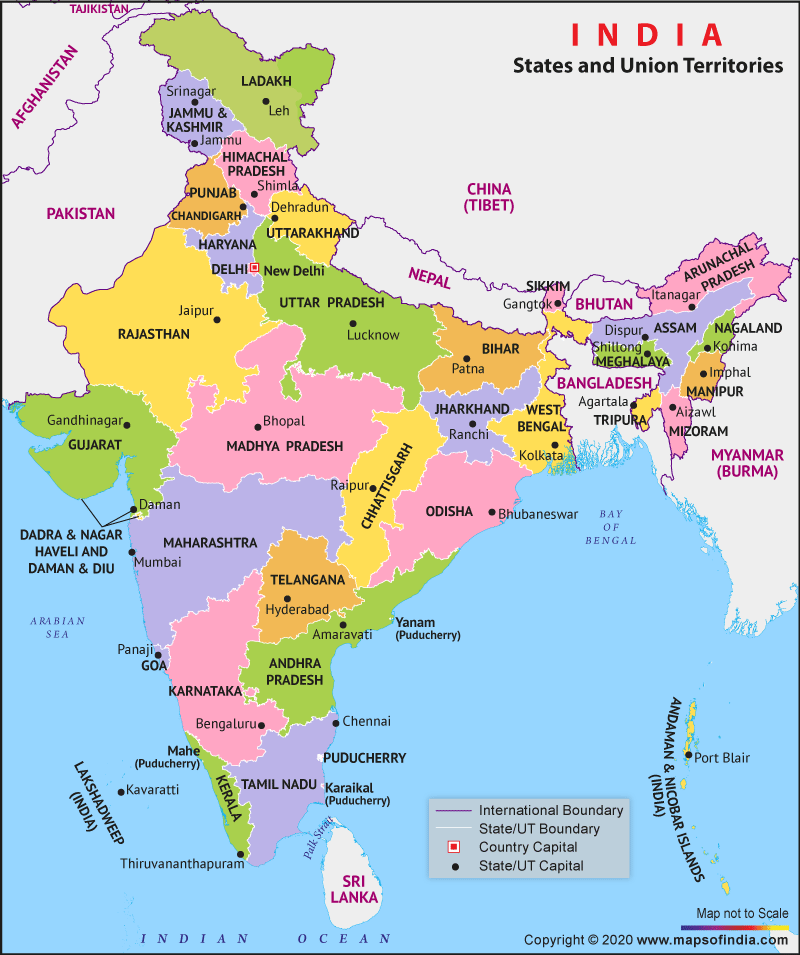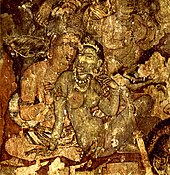Rivers that flow into the sea are sorted geographically..., along the coast starting from the Bay of Bengal in the east, moving along the Indian coast southward till Kanyakumari, and moving northward along the Arabian Sea. Rivers that flow into other rivers are sorted by the proximity of their points of union to the sea: the lower in the list, the more upstream.
The biggest major rivers of India are:
- flowing into the Bay of Bengal: Brahmaputra, Ganges (with its tributaries Yamuna, Kameika, Gomti, Chambal), Mahanadi, Godavari, Krishna, Kaveri (and their main tributaries)
- flowing into the Arabian Sea: Indus, Narmada, Tapti (and their main tributaries)
The remaining rivers are:
- flowing into the inner part of India.
- coastal rivers.

Rivers flowing into Bay of Bengal
Brahmaputra River Basin
- Brahmaputra River
- Lohit River
- Burhidihing River, also called Noa Dihing in its earlier course through Namdapha National Park
- Kameng River
- Disang
- Dikhou
- Bhogdoi
- Kakodonga
- Dhansiri River
- Subanshiri
- Kapili
- Pagladiya
- Manas River
- Sankosh
- Yamuna
- Teesta River
- Rangeet River
- Lachen River
- Lachung River
- Dharla River in Bangladesh
Ganges River Basin
- Ganges River
- Hooghly River (distributary)
- Jalangi River
- River Churni
- Ichamati River
- Damodar River
- Rupnarayan River
- Ajay River
- siang
- tirap
- Mayurakshi River
- Dwarakeswar River
- Mundeswari River
- Meghna River (distributary)
- Padma River (distributary)
- Budhi Gandak
- Kosi River
- Falgu River
- Gandak at Patna
- Son River
- Ghaghara River (Gogra) or Karnali River in Nepal
- Yamuna River
- Gomti River
- Ramganga River
- Kho River
- Malini River
- Surkho River
- Mahananda River
- Mahakali River
- Bhagirathi River
- Alaknanda River
- Gangi River
- Beson River
- Mangai River
- Bhainsai River
- Tamsa River
- Karmanasha
West Bengal Coastal Rivers
Mahanadi River Basin
- Mahanadi River
- Brahmani River
- Baitarani River
- South Koel River near Rourkela
- Sankh River
- Devi River
- Kusabhadra River
- Daya River
- Bhargavi River
- Kadua River
Godavari River Basin
- Godavari River in Andhra Pradesh, Maharashtra states
- Kolab River in Orissa State
- Indravati River in Gadchiroli district of Maharashtra State and also in Chhattisgarh state
- Bandiya River in Gadchiroli
Krishna River Basin
- Krishna River in Andhra Pradesh, Karnataka, Maharashtra states
- Munneru River in Andhra Pradesh
- Akeru River in Andhra Pradesh
- Paleru River in Andhra Pradesh
- Musi River in Andhra Pradesh
- Tungabhadra River
- Vedavathi River
- Suvarnamukhi River
- Veda River
- Avathi River
- Varada River
- Tunga River
- Bhadra River
- Bhima River in Karnataka and Maharashtra
- Sina River
- Nira River
- Mula-Mutha River
- Chandani River
- Kamini River
- Moshi Riverf65r
- Ambi River
- Bori River
- Man River
- Bhogwati River
- Indrayani River
- Kumandala River
- Ghod River
- Bhama River
- Pavna River
- Malaprabha River
- Ghataprabha River
- Varma River
- Koyna River in Satara district of Maharashtra state
Andhra Pradesh Coastal Rivers
Rivers like vamsadhara and nagavalli are the two coastal rivers in srikakulam district of Andhra Pradesh
Sharada river starts at Devarapally in visakhapatnam district and drains in to the Bay of Bengal
Penner River Basin
Kaveri River Basin
- Kaveri River (Kaveri)
- Kollidam (distributary)
- Amaravati River
- Arkavathy River
- Mettur Dam
- Bhavani River
- Hemavati River
- Kabini River
Tamil Nadu Coastal Rivers
- Thamirabarani River
- Palar River
- Vaigai River
- Vellar
- Cooum River
- Adyar River
Rivers flowing into Arabian Sea
Karnataka Coastal Rivers
The rivers flowing through three coastal districts of Karnataka join Arabian sea.
- Kali River
- Netravati River
- Sharavathi River
- Aghanashini River
- List of rivers of Dakshina Kannada and Udupi districts
Kerala Coastal Rivers
The rivers flowing through three coastal districts of Kerala to join Arabian sea.
- Periyar River
- Bharathapuzha River
- Pamba River
- List of rivers of Kerala
Coastal rivers of Goa
- Tiracol
- Chapora
- Baga
- Mandovi River
Mandovi River,known as Mhadai in Western Ghats of Goa and Karnataka, has three sources viz., the Degao, the Nanevadichi Nhõi (nhõi means river in Konkani) and Gavali the last two sources go dry in summer season. The main origin of the river, in the form of a spring, even during Summer season, is at Bavtyacho Dongor hills near Degao village in Khanapur Taluka of Belgaum Dist in Karnataka State. The three streams confluence at the Kabnali village whereafter it is known as Mhadai, which has an easterly flow initially, then flows north and finally turns to the west on entering Goa. Mhadai River enters Goa between Krisnapur (Karnataka) and Kadval (Goa) villages. The tributaries of the Mhadai are the Nersa Nala, the Chapoli and Kapoli nala, the Bail Nala, the Volo Panshiro ( Karnataka), the Suko Panshiro, the Harparo, the Nanodyachi Nhõi, the Vellsachi Nhõi, the Valpoichi Nhõi, the Ghadghadyachi Nhõi, the Valvanti/ Volvot, the Divcholchi Nhõi, the Asnoddchi Nhõi, the Khandeaparchi Nhõi, the Mhapxechi Nhõi, Xinkerchi Nhõi etc. It is the longest River of Goa with a reported length of 105 km.
- Zuari River
- Sal
- Talpona
- Galgibag
Maharashtra Coastal Rivers
- Shastri River
- Gad River
- Vashishti River
- Savitri River
- Patalganga River
- Ulhas River
- Thane Creek (distributary)
- Vasai Creek (distributary)
- Mithi River or Mahim River
- Oshiwara River
- Dahisar River
- Tansa River in Thane
- Vaitarna River
- Surya River
Tapti River Basin
Tapti River and its tributaries
- Tapti River in Gujarat, Maharashtra and Madhya Pradesh
- Gomai River in Nandurbar district of Maharashtra
- Arunavati River in Dhule district of Maharashtra
- Panzara River in Jalgaon, Dhule districts of Maharashtra
- Kaan River in Dhule district
- Aner River in Jalgaon, Dhule districts
- Girna River in Nashik, Malegaon, Jalgaon districts
- Titur River in Jalgaon district
- Waghur River in Jalgaon, Aurangabad districts
- Purna River in Amravati, Akola, Buldhana, Jalgaon, Navsari districts of Gujarat, Maharashtra Madhya Pradesh
- Nalganga River in Buldhana district
- Vaan River in Buldhana, Akola, Amravati districts of Maharashtra
- Morna River in Akola, Washim districts
- Katepurna River in Akola, Washim districts
- Umaa River in Akola, Washim districts
- Sangiya River in Amravati district of Maharashtra
Narmada River Basin
- Narmada River
- Kolar River in Sehore
- Barna River in Raisen
- Hiren River
- Tawa River
- Burhner River
Mahi River Basin
Sabarmati River Basin
Indus River Basin
- Indus River (largely in Pakistan)
- Panjnad River (Pakistan)
- Sutlej River (Northern India and Pakistan)
- Chenab River (largely in Pakistan)
- Ravi River (largely in Pakistan)
- Jhelum River (in Pakistan and Indian Kashmir)
- Neelum River or Kishanganga
- Tawi River
- Shyok River
- Nubra River, rising from the meltwater of the Siachen Glacier
- Chang Chenmo River
- Galwan River
- Suru River
- Yapola River
- Zanskar River
- Markha River
- Khurna River
- Tsarap River
- Doda River
- Hanley River
Rivers flowing into inner part of India
- Ghaggar River in Haryana, Rajasthan
- Musi River at Hyderabad, India
- Samir River, India/ Gujarat
Alphabetical list:-
A-B-C-D
Bhadra (Karnataka), Bharathapuzha(Kerala), brahmaputra river, Chenab River
E-F-G-H
Falgu River
Gadhi River, Ganges River, Gambhir River, Gandak, Gayathripuzha, Ghaggar River, Ghaghara River, Ghataprabha, Girija River, Girna River,Godavari River, Gomti River, Gunjavni River
Halali River, Hoogli River
I-J-K-L
Indus River, Indravati River,
Jaldhaka, Jhelum River, Jayamangali River at tumkur district, River Jambhira
Kabini River, Kadalundi River, Kaagini River, Kali River- Karnataka, Kali River- Uttarakhand, Kali Sindh River, Kaliasote River, Karmanasha,Kallayi River Kalpathipuzha, Kameng River, Kanhan River, Kamla Balan bihar, Kannadipuzha, Karnaphuli River, Kaveri River, Kelna River,Kelo River Khadakpurna River, Kodoor River, Koel River, Kolab River, Kollidam River, Kosi River, Koyna River, Krishna River, Kundali River,kaushiga River, Kuwanav River, Ken River
Lachen River, Lachung River, Lakshmana Tirtha River, Luni River,
M-N-O-P
Mahanadi River, Mahananda River, Mahakali River, Mahi River, Mandovi River, Meenachil River, Meghna River, Mithi River, Mula River, Musi River, Mutha River, Malaprabha, Manorama River,
Narmada River, Nethravathi River, Nag River (Maharashtra)
Palar River, Pamba River, Pahuj River, Pamba(Kerala), Panjnad River, Panzara River, Parambikulam River, Parbati River (Himachal Pradesh),Parbati River (Madhya Pradesh), Parbati River (Rajasthan), Payaswini, Pench River, Penganga River, Penner River, Periyar River, Ponnaiyar River, Pranhita River, Purna River,Pluest river [Poonch J&K], Panchaganga River
Q-R-S-T
Ramganga, Rangeet River, Ravi River, Rihand River, Rukmavati River, Rupnarayan River, Rapti River, Ram Rekha River,
Saryu River, Sarswati River, Sabarmati River, Sankh River, Shalmala River, Sharavathi River, Shimsha River, Shipra River, Sindh River, Sita River, Son River, Souparnika River, South Koel River, Subarnarekha River, Sutlej River, Surya River, Swarna River,
Tansa River, Tapti River, Tawa River, Teesta River, Thuthapuzha, Tons River Tunga River, Tungabhadra River, Thamirabarani River Tedi River,
U-V-W
Vaan River, Vaigai River, Varuna Vashishti River, Vedavathi River,Vrishabhavathi, Vishwamitri River
Ulhas River, (ural river)
Wainganga River, Wagh River, Wardha River, wehashli river
X-Y-Z
Yamuna River,
Zuari River,
 RESETTING THE TABLE In a new version of the periodic table, the atomic weights of elements with more than one stable form, such as chlorine, are shown as a range, while elements with one stable form, like arsenic, have an exact weight.
RESETTING THE TABLE In a new version of the periodic table, the atomic weights of elements with more than one stable form, such as chlorine, are shown as a range, while elements with one stable form, like arsenic, have an exact weight. 



